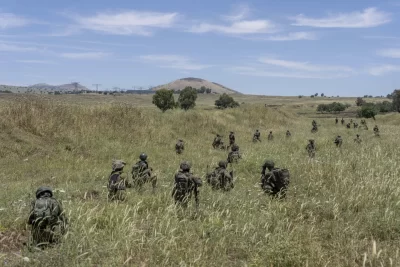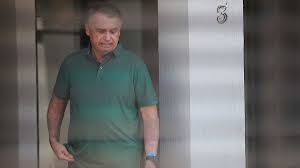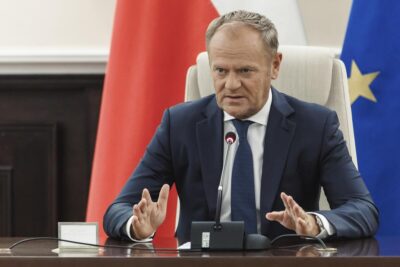
WARSAW, Poland— European leaders on Thursday expressed alarm over growing Russian hostility threatening their countries as Moscow’s forces pursue their invasion of Ukraine — concerns exacerbated by events of the previous day when multiple Russian drones struck Polish soil.
The incursion into Poland, which came during unrelenting Russian strikes on neighboring Ukraine, deepened longstanding fears that the three-year war between Poland’s neighbors could precipitate a wider conflict. U.S.-led efforts to steer Moscow and Kyiv toward a peace settlement have so far failed to get traction.
European officials described the incursion as a deliberate provocation, forcing the NATO alliance to confront a potential threat in its airspace for the first time and compelling it to take stock of its military response and capabilities.
Some in Europe call incursion a deliberate provocation
Starmer’s office said that it “was clear that Russia was continuing to ramp up its aggression, systematically stepping up its attacks through a campaign of increasingly belligerent actions.” The German government said it will “extend and expand air policing over Poland.”
NATO’s supreme commander in Europe, U.S. Gen. Alexus Grynkewich, said Thursday that the alliance wasn’t certain about the number of drones that entered Polish territory, nor whether they were fired intentionally.
“But we will learn lessons. We will learn of things that we need to enhance our posture, to handle these limited incursions,” Grynkewich said in Vilnius, Lithuania.
The foreign ministers of Ukraine, Poland and Lithuania published a joint statement calling the incursion “a deliberate and coordinated strike constituting an unprecedented provocation and escalation of tension.”
Finnish President Alexsander Stubb, who met Thursday with President Volodymyr Zelenskyy in the Ukrainian capital of Kyiv, said that now “the line between war and peace has been blurred” and that Wednesday’s events were another milestone following Russia’s illegal seizure of the Crimean Peninsula from Ukraine in 2014.
“We now live in an age of uncertainty,” Stubb told a news conference with Zelenskyy.The Kremlin said it had nothing to add to a Wednesday statement by Russia’s Defense Ministry, which insisted that Russian forces had not targeted Poland and that it was open to discuss the incident with Polish officials.
The U.N. Security Council scheduled an emergency meeting on the drone incursion for Friday afternoon at Poland’s request.
Poland strikes a defiant tone
Polish Prime Minister Donald Tusk addressed Polish troops at an air base in the central city of Lask on Thursday, praising the quick response from the troops and NATO allied forces from the Netherlands.
He pledged to push ahead with a “great modernization program” for his country’s military.
But the response also brought questions about the wisdom of using advanced fighter jets to shoot down relatively cheap drones.
Poland expects to receive its first F-35 fighter jets from the United States next year, Tusk said. It will be the first delivery of some of the 32 aircraft expected by 2030 as part of a support package finalized five years ago, he said.
Polish President Karol Nawrocki also visited a military air base Thursday, striking a defiant tone in a statement that said Poland “doesn’t get scared by Russian drones.”
Nawrocki described the incursion as “an attempt to test our abilities, the ability to react.” He was visiting a base in Poznan-Krzesiny, in western Poland.
The Polish Air Navigation Agency announced that Poland was introducing air traffic restrictions in the eastern part of the country. It said the step was taken at the request of the Polish army for national security reasons but did not elaborate.
Poland said some of the drones that entered its airspace Wednesday came from Belarus, where Russian and local troops have begun gathering for war games scheduled to start Friday. Poland is closing its border with Belarus at midnight, a planned move also associated with the military exercises.




